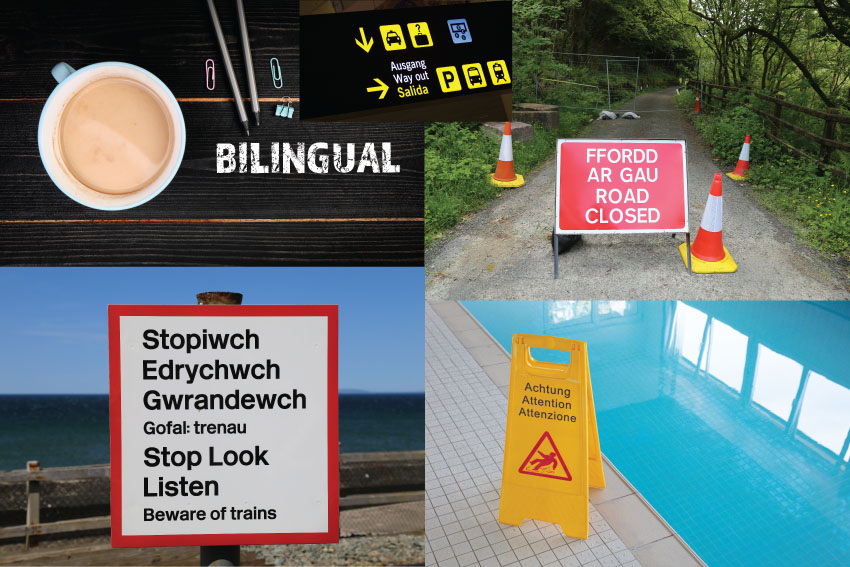
Bilingual signs, those featuring text or symbols in two different languages, are a widespread presence in many parts of the world. Whether it's road signs, public facilities, or educational institutions, the use of multiple languages on signage has become a hallmark of inclusive and culturally sensitive environments.
But what lies beneath the surface of these signs, and why do we need them? In this blog, we will delve into the compelling reasons why bilingual signs have evolved into an essential aspect of our society.
What Are the Benefits of Bilingual Signs?
Bilingual signs serve several important purposes, making them a valuable addition in many regions and situations. Here are some reasons why we need bilingual signs:
Cultural Heritage Preservation
Bilingual signs help preserve and promote the cultural heritage and languages of a region. They acknowledge the historical significance of minority languages that were spoken before the dominance of a major language like English.
Inclusivity
Bilingual signs make information accessible to a wider audience. They cater to speakers of both the dominant language and minority languages, ensuring that everyone can understand important messages, instructions, and information.
Safety
In contexts like road signs or workplace safety signs, bilingual signs are crucial for ensuring safety. They help prevent accidents and misunderstandings by providing clear information to all individuals, regardless of their language proficiency.
Tourism and Hospitality
In areas frequented by tourists, bilingual signs can enhance the visitor experience. They make it easier for tourists who may not be familiar with the local language to navigate and understand their surroundings.
Legal Requirements
In some regions, laws mandate the use of bilingual signs, especially in government, public services, and education. Compliance with these laws is necessary to avoid legal consequences.
Respect for Diversity
Bilingual signs show respect for linguistic diversity and cultural pluralism. They promote tolerance and inclusivity, fostering a sense of unity among diverse communities.
Effective Communication
Bilingual signs are practical tools for effective communication. They can convey essential information, warnings, and instructions in a concise and understandable manner.
Community Identity
Bilingual signs can strengthen the identity and pride of minority language-speaking communities. They signify that their language and culture are valued and respected.
Promotion of Multi-lingualism
Encouraging the use of multiple languages in signage can promote multilingualism, which can be beneficial in our increasingly interconnected world.
Why Are Some People Against Bilingual Signs?
The effectiveness of bilingual signs, like any type of signage, depends on factors such as their design, placement, and visibility. If bilingual signs are poorly designed, obscured, or not properly maintained, they may fail to convey their intended messages effectively, potentially leading to safety hazards or misunderstandings.
In essence, bilingual signs themselves are not dangerous, but the way they are implemented and maintained can impact their ability to fulfil their intended purpose, which is to improve communication, safety, and accessibility in multilingual environments.
Are Bilingual Signs Worth It?
In summary, bilingual signs are necessary to honour cultural heritage, ensure inclusivity and safety, comply with legal requirements, and promote effective communication in diverse communities. They are a tangible way of acknowledging and celebrating linguistic diversity while serving practical purposes in everyday life.
As previously mentioned, there are concerns that bilingual signs can be confusing to read. This can be particularly worrying when it comes to bilingual safety signs and bilingual road signs, as not understanding the sign can result in dangerous outcomes.
However, despite the worries about the negative effects bilingual signs can have on drivers, the science disagrees. According to a 2005 research study, by transportation experts at the University of Leeds, it was determined that two-line signs did not pose any issues for drivers regardless of the language they were written in.
Proper design and maintenance are essential to maximise the benefits of bilingual signage while minimising any potential risks.
Shop Our Full Range of Bilingual Signs at Label Source
Here at Label Source we offer a wide range of bilingual safety signs with text in Welsh and English to comply with Welsh Language Act 1993, and to meet Health and Safety standards. All pictograms and colour schemes comply with ISO EN 7010 and the Safety Signs and Signals Regulations 1996.